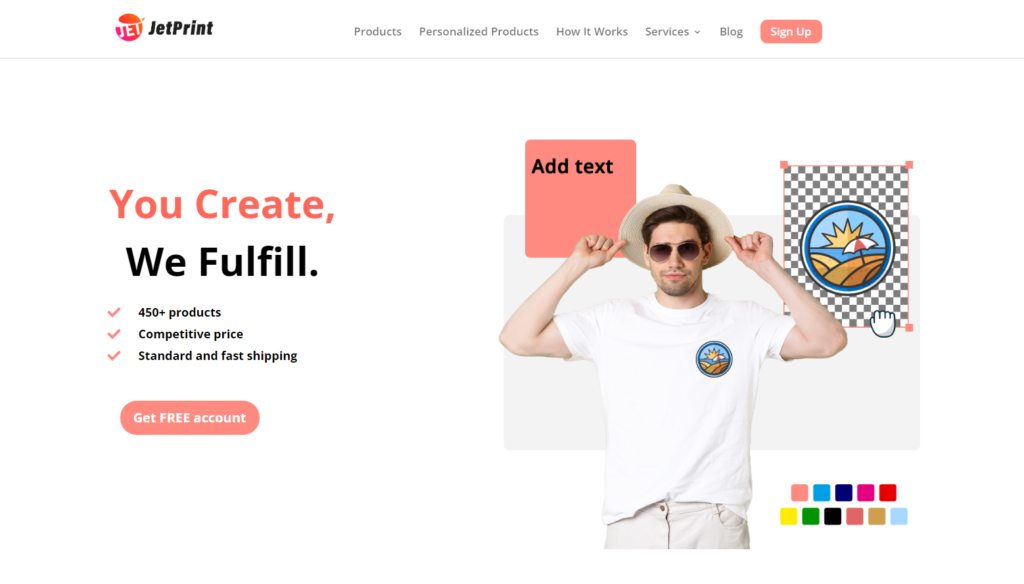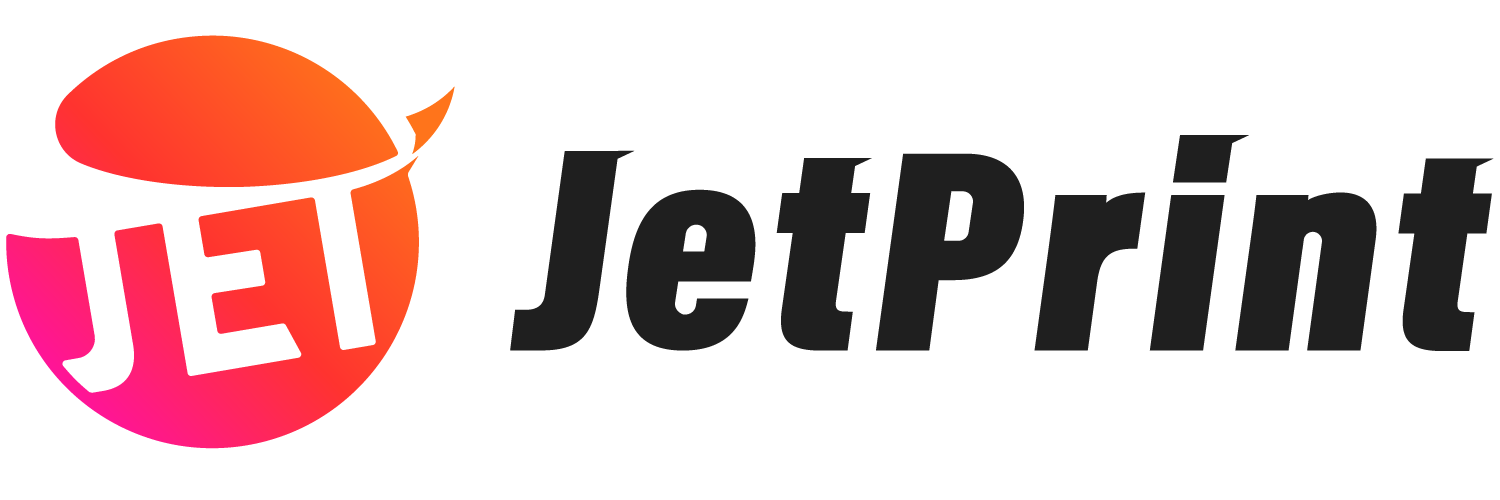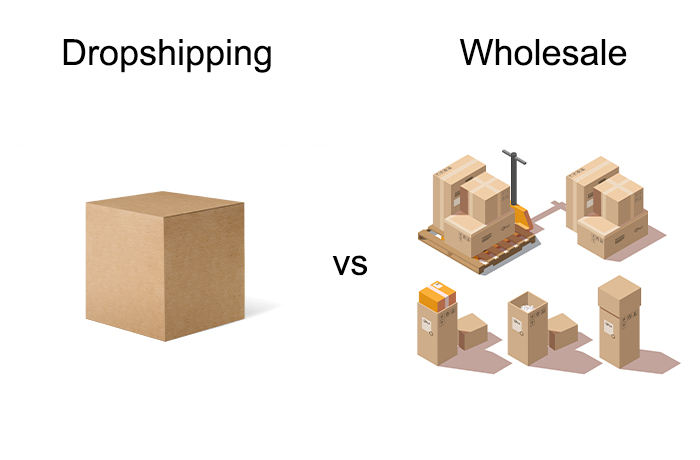Dropshipping
Dropshipping is a method of retail fulfillment in which a store does not maintain inventory of the products it sells. Instead, when a store sells a product, it purchases the item from a third party and ships it directly to the customer. This dropshipping business model is ideal for entrepreneurs who want to start an e-commerce business with minimal upfront investment.

Advantages of dropshipping
1. Low initial investment
Dropshipping requires minimal upfront inventory investment, making it a cost-effective option for beginners. This means less capital is tied up in products.
2. Wide product range
You can offer a diverse range of products without the need to stock them, providing customers with more choices. You’re not limited to bulk purchases, and you can source products from multiple suppliers simultaneously.
3. Risk reduction
Since you only purchase products after they are sold, the risk of unsold inventory is virtually eliminated. If a product doesn’t sell, you won’t be left with excess stock.
4. Location independence
You can operate a dropshipping business from anywhere with an internet connection.
Disadvantages of dropshipping
1. Lower profit margins
Dropshipping often results in lower profit margins due to higher product costs. Selling popular products may lead to price competition with other merchants, impacting your profits. To offer unique products, you may need to use a print-on-demand service.
2. Limited control
You depend on your suppliers to fulfill orders, so quality control and shipping times may be beyond your control. Additionally, you may have limited knowledge of the products and rely on suppliers for product information.
3. Intense competition
The low barriers to entry in dropshipping result in fierce competition as many merchants enter the market.
4. Brand building difficulty
Lack of control over product quality and inventory, coupled with the presence of similar products, makes it challenging to differentiate and build a unique brand image. Many dropshippers may prioritize short-term profits over brand-building activities such as marketing, customer support, and product development. To establish a unique brand, consider a print-on-demand business.
Related articles:
Is Dropshipping Worth It?
Branded Dropshipping – An In-Depth Guide
How to Start a Dropshipping Business in 8 Simple Steps
Wholesale
Wholesale purchasing involves buying products in bulk from manufacturers or distributors at discounted prices. Retailers can then stock and sell these products at a markup.

Advantages of wholesale
1. Increased profit margins
Buying in larger quantities at a lower per-unit cost allows for higher potential profit margins. Generally, the larger the order quantity, the greater the discount, resulting in improved profit margins.
2. Quality control
Wholesalers can set quality assurance requirements and standards for their suppliers, including specifications for materials, production processes, and performance standards. You may also perform random or systematic sampling of received products to ensure quality and consistency.
3. Brand opportunities
Wholesalers have the option to brand and market their products, creating a unique brand image. You can request customized branding and packaging from suppliers, making your products stand out in the market.
Disadvantages of wholesale
1. Higher initial investment
Wholesalers need substantial capital to purchase products in large quantities from manufacturers or suppliers. Additionally, they often require storage space, such as warehouses, which can be costly. Expenses related to shipping and packaging also add to the initial investment.
2. Inventory management
Managing inventory can be both complex and expensive, necessitating storage space and order management. Renting a warehouse or storage facility can be a significant expense.
3. Risk of slow sales
If a product doesn’t sell as expected, excess inventory may accumulate, leading to losses from unsalable products.
Dropshipping vs. wholesale: key differences
1. Budget
If you have limited capital to start a business, dropshipping is a more accessible option due to its lower upfront costs.
Wholesale, on the other hand, requires you to buy products in bulk to secure discounts, which means you need more capital.
2. Product niche
With dropshipping’s flexibility, you can choose any products you want to sell without worrying about potential losses if a product doesn’t sell well.
A wholesale business confines you to your existing products. Because of the pressure of maintaining inventory, you must keep selling those items to minimize losses.
3. Product quality
Dropshipping merchants may encounter challenges related to product quality and shipping. When these issues arise, there’s little you can do except rely on your suppliers, putting your business in a passive position.
A wholesale business allows you to take an active role in ensuring product quality and shipping. You can test the supplier’s products and double-check shipments, which helps build a good reputation for your business.
4. Growth plan
Offering similar products can make customers hesitant to make purchases since there are always cheaper alternatives. This limits your dropshipping business’s expansion as you can’t maximize profits, making growth more challenging.
Wholesale provides better long-term scalability. The uniqueness of your products and the ability to control quality can lead to increased profits over time, facilitating business expansion.
5. Packaging
Dropshippers typically rely on the packaging provided by their suppliers, which is often standard and simple, sometimes lacking brand logos. However, some print on demand companies offer custom branding services.
On the other hand, wholesalers usually design or purchase their own packaging, fully tailored to their brand’s requirements. This personalized packaging not only enhances the brand image but also boosts customer satisfaction and loyalty, making the unboxing experience feel like a gift.
6. Profit
Dropshippers enjoy flexible pricing, allowing them to adjust according to market demand, but their profits tend to be slim. This is because they lack the price advantages of bulk purchasing and are often caught in price wars when offering similar products.
Wholesalers, however, typically purchase at lower prices, which provides higher profit margins. The trade-off is the pressure of managing inventory.
Dropshipping vs. wholesale: how should I choose?

When deciding between dropshipping and wholesale, three key factors to consider are your risk tolerance, product quality control, and profit margins. If you aspire to establish your own unique brand from the outset, wholesale is the preferred method for creating a brand-centric business. Dropshipping may not afford you the opportunity to offer distinctive products.However, if you possess design talents and seek a low-risk model, print-on-demand could be an attractive option. In this model, the appeal of your product design is pivotal in driving sales. For instance, collaborating with print on demand suppliers like JetPrint can also facilitate branding services.


0 Comments